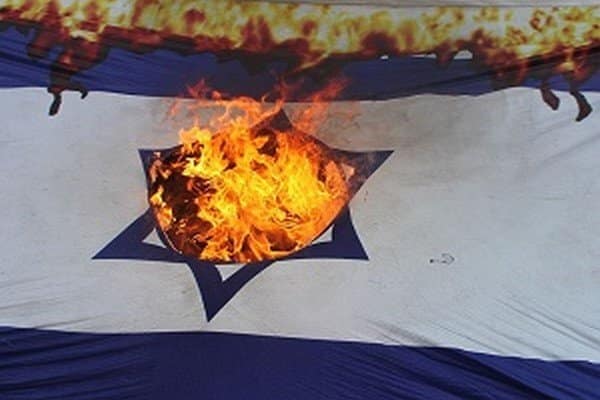The weakness of the Zionist regime’s strategic depth against Hezbollah.
One of the most important issues that has not been addressed after the beginning of the Al-Aqsa storm operation, and especially after the Zionist regime’s airstrikes, is the weakness of the strategic depth of this regime. This weakness is one of the most important Achilles heel of the occupying regime, which the Lebanese Hezbollah is well aware of.
Weak strategic depth of the Zionist regime
The Zionist regime does not have strategic depth either inside or outside. The internal strategic depth is the existence of a long distance from the enemy and obstacles to reach the capital. Foreign strategic depth also creates a distance between the enemy and the territory that needs to be defended. The weakness of the strategic depth is particularly noticeable in the population, geography, and industries of this regime. The population of this regime is also small and consists of a little more than 9 million people. The maximum width of the borders of this regime is only 137 km and at the narrowest point it is only 15 km.
In addition, 55% of the territory of the occupied territories is made up of the Negev desert. Also, half of the population and most of its industrial, commercial and social centers are concentrated in a narrow coastal strip of 100 kilometers. This weakness has made the industries and military infrastructure of the Zionist regime easily accessible from the borders.
Since the establishment of this regime, the leaders of the Zionist regime have been worried about the lack of strategic depth, especially about Arab countries. These restrictions have put the military organization of the Zionist regime in a constant offensive mode. Ben-Gurion, the prime minister of this regime, referred to this security policy as “the transfer of the battle to the enemy’s territory… due to the lack of strategic depth”. This aggressive policy has prioritized the two elements of quick victory in wars, nuclear deterrence, advanced firepower to deter Arab attacks, acquisition of long-range weapons, and the deliberate use of disproportionate violence against civilians.
The importance of Gaza and Lebanon in the strategic depth of the Zionist regime
The strategic depth of the Zionist regime suffers the most damage from the two points of the Gaza Strip and the southern Lebanon region. Tel Aviv captured the Gaza Strip in the Six Day War of 1967 and captured 1100 km of Lebanese territory in 1985. In both wars, the logic of the Zionist regime was that to contain the threats, foreign lands should be occupied and the war should be moved away from vulnerable urban areas. Tel Aviv’s strategic depth policy after withdrawing from Gaza in 2005 was to confront Hamas indirectly using air force and artillery without the need for a long-term physical presence inside the region.
Nevertheless, Hamas’s surprise attack on October 7 delivered an undeniable blow to the strategic depth of the Zionist regime; Especially, the unprecedented number of casualties showed that the policy of remote containment and the presence of defense forces in the east of the border with Gaza does not ensure the security of the Zionist regime. Over the past year, many experts in the field of internal security of the Zionist regime have recommended that any policy to provide strategic depth should meet two goals: first; demilitarizing Gaza for the withdrawal of the Zionist forces and second; Rapid rebuilding of civilian and government infrastructure to delegitimize any further Palestinian violence. However, the main problem here is the far-right government and its supporters, who seek ethnic cleansing of Gaza and fulfill the slogan of “occupy, expel, settle” and do not seem to be satisfied with anything less than a long-term occupation of Gaza.
Most of the population of the occupied territories is made up of settlers. The settlers in the northern regions of the occupied territories are the most important targets of Hezbollah. As a result of Hezbollah’s attacks, more than 300,000 settlers in the north of the occupied territories in Akka, Afulah, Beitshean, Karmiel, Kiryat Shmona, Maalot Tarshiha, etc. have fled.
Industries of the Zionist regime
Most of Hezbollah’s attacks have been focused on the key industries of the Zionist regime. A large part of the military, economic industries, industrial companies, mines, and agricultural lands of the Zionist regime are exposed to Hezbollah attacks. Since the beginning of the war, the important military industry company Rafael of the Zionist regime had to move its activities to the rear areas in a factory near Shlomi town due to continuous conflicts in the north. In a report in June 2024, the Hebrew newspaper Calcalist announced that Israel’s main industrial centers in the north had either closed or had to be relocated and that labor stability in northern factories had dropped to less than 50 percent.
This vulnerability has caused Hezbollah to engage the Zionist regime in psychological warfare at the same time as military attacks in the past few months. In this regard, Hezbollah tried to show the sites that could be used in the event of an all-out war by publishing drone images of strategic locations inside Israel, including the city of Haifa, which is located 27 kilometers from the border with Lebanon and the Golan Heights. Target grade.

